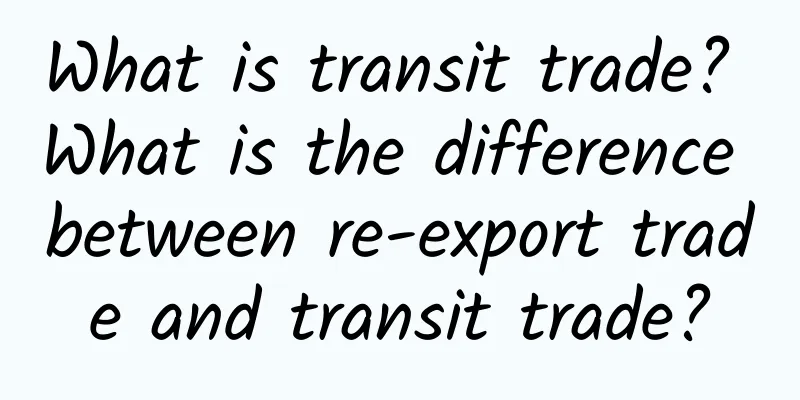What is transit trade? What is the difference between re-export trade and transit trade?

|
What is transit trade? Transit trade refers to the shipment of goods from Country A to Country B. Due to geographical reasons, it must pass through a third country. For the third country, although it is not directly involved in this transaction, the goods must enter and exit the country's national or customs territory and must go through customs statistics, thus constituting a part of the country's import and export trade. What is the difference between entrepot trade and transit trade? Entrepot trade: Trade activities between commodity-consuming countries and commodity-producing countries through third countries are called entrepot trade for third countries. Commodity-producing countries sell commodities to merchants in third countries (or regions), and then merchants in third countries (or regions) sell commodities to real commodity-consuming countries. This kind of trade is indirect trade for commodity-producing and commodity-consuming countries, and entrepot trade for third countries (or regions). Transit trade: Trade activities in which the export goods of other countries pass through the borders of their own country without being processed or restructured, and are transported to another country in basically the same condition. It includes direct transit trade and indirect transit trade. For example, the commodity trade between a landlocked country and a non-adjacent country must pass through the borders of a third country. For the customs of the third country, this kind of trade will be classified as transit trade. However, if this kind of trade is carried out by air transport across the airspace of a third country, the customs of the third country will not classify it as transit trade. It refers to the trade activities in which the goods of other countries pass through the borders of their own country without being processed or restructured, and are transported to another country in basically the same condition. The difference between re-export trade and transit trade is that in re-export trade, the ownership of goods is first transferred from the exporter in the producing country to the merchants in the third country (or region), and then to the merchants in the importing country who finally consume the goods. In transit trade, the ownership of goods does not need to be transferred to the merchants in the third country. This is the end of the article on transit trade. If you want to learn more about transit trade, please follow us. We will continue to answer your questions. |
<<: What is countervailing duty? What are the characteristics of countervailing duty?
>>: Cdiscount--France's largest cross-border e-commerce
Recommend
How is Rogo.com? What services does Rogo.com provide?
How about Rogo.com? Rogo.com originated from the ...
The Latest Walmart Factory Audit Ethics Standards
WAL*MART/Wal-Mart Factory Inspection Latest Facto...
Prohibition of Forced Labor Policy and Procedures
1. Purpose Ensure that employees' freedom, rig...
ICTI Factory Audit Factory Status Terms and Definitions
From the moment a factory applies for ICTI factor...
Toy industry explores emerging markets and export situation begins to improve
Guangzhou, March 12, Xinhuanet (Chen Mengxing) &q...
FSSC22000 certification on-site audit focus
During the audit process, the focus of the FSSC22...
What is Picreel? What can Picreel do?
Picreel is a customer retention tool. In simple t...
Occupational Hazard Factors of Benzene and Formaldehyde
1. Benzene: 1. Health Hazards Due to its high vol...
How is Xiji.com? What services and advantages does Xiji.com have?
How about Xiji.com? Xiji (www.xiji.com) is an int...
Several important things to keep in mind during factory inspection
1. Legality The legality of the enterprise is the...
What are the functions of BigTracker? Introduction to BigTracker
BigTracker Product Selection Cool Introduction Bi...
Carrefour Supplier Code of Conduct
Carrefour Supplier Code of Conduct always requires...
The latest "Implementation Rules for Organic Product Certification"
The latest "Implementation Rules for Organic...
What are the advantages of Kaiyunda International Freight Service? What are the service restrictions of Kaiyunda International Freight?
What are the advantages of Kaiyunda International...
WALMART latest fire protection requirements
1. Each shift in the building shall conduct a joi...









